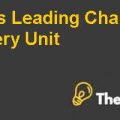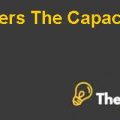Harley Davidson Project Case Study Solution
Introduction
Harley-Davidson, a well-known American motorcycle manufacturer, positions itself as an iconic representation of freedom, individuality, and the open road. Originating in 1903 in Milwaukee, Wisconsin, Harley-Davidson has intertwined itself into the fabric of motorcycle culture with its unique designs and powerful performance.
The company has evolved with over a century of history, from a small garage operation to a global driving force, renowned for its distinctive V-twin engines, timeless designs, and a passionate community of riders known as the Harley Owners Group (H.O.G.). Harley-Davidson motorcycles have excelled in transportation, becoming a symbol of personal expression and a lifestyle choice embraced by fans around the world.
Harley-Davidson, made a significant move by entering the Indian market, aiming to access the second-largest motorcycle market in the world. With its long history and iconic brand, Harley-Davidson embarked on this venture in India, a country known for its thriving economy and a growing middle class with considerable purchasing capability.
Having initiated plans for its Indian presence in 2005, Harley-Davidson's journey into the Indian market was facilitated by a US-India trade deal that enabled importing and selling foreign-made heavy-weight motorcycles, paving the way for its entry. This move presented both opportunities and challenges as Harley-Davidson aimed to capture the attention of Indian consumers amid fierce competition from local and global motorcycle brands.
As the company established a network of dealerships in key metropolitan areas and strategized to resonate with India's diverse consumer base, its marketing endeavours were aimed at blending its iconic brand reputation with the preferences and aspirations of Indian motorcycle enthusiasts. This paper seeks to address the questions related to the “Harley Davidson Wheels into India” case to demonstrate an understanding of the concepts covered throughout the syllabus.
Question 1:
Harley-Davidson is leveraging emotional aspects in its marketing strategy by emphasizing its unique image of independence and individuality. Harley-Davidson positions itself as a brand that goes beyond age and gender, resonating with consumers' sense of individuality and self-expression.
With its customized kits and membership in the Harley Owners Group (H.O.G.), the company creates a feeling of camaraderie and inclusion among its customers. This emotional connection goes beyond functional attributes, creating a lifestyle and experience around the brand, thereby influencing consumers' emotional attachment to Harley-Davidson motorcycles.
This strategy is consistent with the theory of "emotional decision-making", where consumers’ choices are based on their feelings. Harley-Davidson's focus on building a community and developing a sense of belonging, as exemplified by the Harley Owners Group (H.O.G.), not only induces positive emotions but also strengthens consumers' emotional connection to the brand.
Question 2:
Consumer characteristics play a pivotal role in influencing decisions to buy a Harley-Davidson motorcycle in India. The concept of "judgement and decision tactics" underlines that consumer expertise, mood, and time pressure influence choices. In the Indian context, consumers who perceive themselves as experts in motorcycles might be drawn to the powerful V-twin engines and unique features of Harley-Davidson bikes.
Positive moods and a sense of leisure might increase the likelihood of considering a premium purchase like a Harley-Davidson. Additionally, consumers under time pressure might lean towards familiar brands like Harley-Davidson due to their reputation and brand loyalty, simplifying their decision-making process.
Question 3:
The concept of "anchoring and adjustment" involves using initial information (anchor) to make subsequent decisions. For Harley-Davidson, challenges lie in setting an anchor for premium pricing in a market where domestic brands offer lower-priced alternatives.
However, by positioning their motorcycles as symbols of status, individuality, and lifestyle, Harley-Davidson can set a new anchor and redefine consumers' perception of value. This strategy aligns with the concept of "consumer characteristics and other people influencing judgements and decisions," where consumer characteristics (such as lifestyle aspirations) and the influence of others (peer perceptions) play a role in forming judgements.
Question 4:
The concept of "experiential learning" and "thought-based decisions" is at play here. Allowing buyers to test-ride Harley-Davidson bikes aligns with the idea that consumers learn from their experiences. By giving potential buyers the chance to physically experience the brand, Harley-Davidson taps into the "experiential learning" model.
This aligns with the "thought-based decisions" concept where consumers may use compensatory or non-compensatory models to evaluate attributes, practiced by brand or attribute, and deliberate gains versus losses. I agree with this marketing decision as it provides potential buyers with a firsthand encounter, enabling them to make informed decisions based on real experiences................
order on the website to order your own originally done case solution."}" data-sheets-userformat="{"2":513,"3":{"1":0},"12":0}">This is just a sample partial case solution. Please place the order on the website to order your own originally done case solution.













